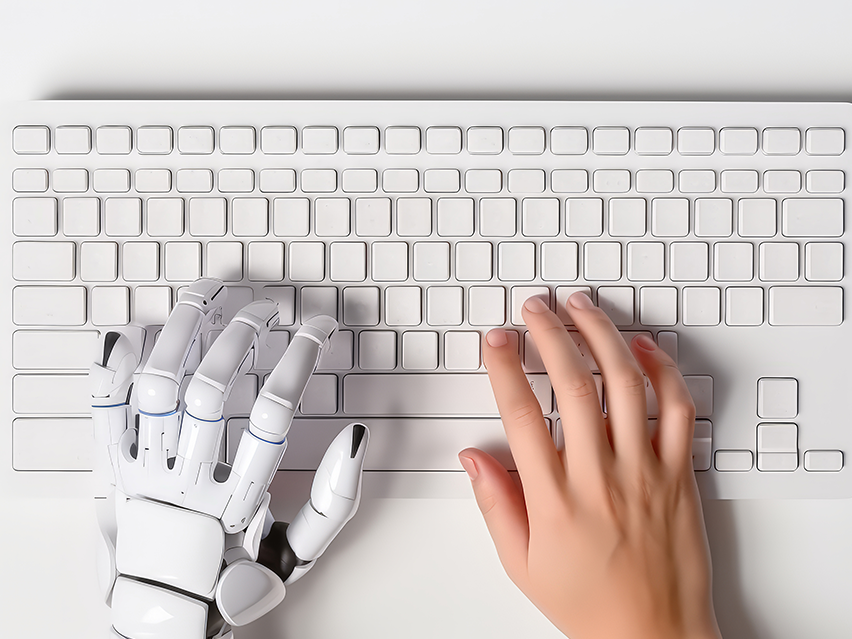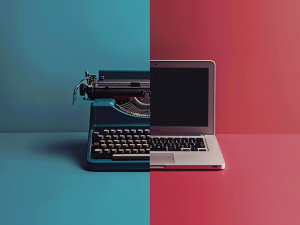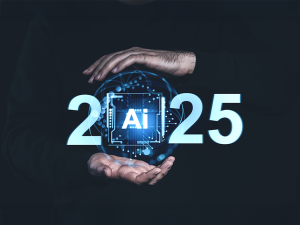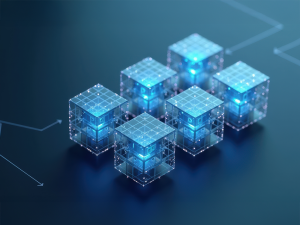Remember when writing code felt a lot like building with Lego? Block by block, just you and your keyboard. Hopefully, this will lead to a successful compilation and a great result.
Fast forward to today, and we’re in an era where AI and software engineering intersect like never before. AI can autocomplete lines of code, generate entire functions, and even test software before the intro of the song is over. It is even more important to create a sort of jamming session with the AI; humans and machines building together, a give and take, a collaborative iteration that gives way to ideas, and nudges us to dig deeper than the intended result. AI is the autocomplete feature, not the prompt.
At Gateway Group, with 28 years in the software industry, we’ve seen this change happen in front of our eyes. We’ve moved from monolithic systems to microservices, and now to collaborative AI and intelligent co-development. The tools have changed, the speed has increased, but one thing hasn’t: human ingenuity remains irreplaceable. And AI isn’t here to replace it; it’s here to extend it.
Think of AI as the co-pilot, not the captain.
The one assisting in the background, offering suggestions, speeding up the process, and reducing the manual load. But it’s still the human at the controls. The one who understands the context, makes the calls, and sees the whole picture. And every engineer knows, without context, the code is not tethered to the problem.
Companies around the world are quickly realizing this balance. According to Exploding Topics, 77% of companies are either using or exploring the use of AI, and 83% consider it a top priority in their business plans. It’s a fundamental shift in how we work. No longer a new lens to look at our workflow, but the workflow itself.
Here’s what AI brings to the table:
- Speeds up coding with auto-suggestions and code generation
- Analyzes large codebases in seconds
- Identifies bugs and recommends fixes
- Automates repetitive and time-consuming tasks
But here’s what it can’t do:
- Understand business goals or user needs
- Communicate with stakeholders and adapt in real time
- Apply empathy or make creative judgment calls
- Translate vision into scalable product design
That’s where human-in-the-loop development becomes essential. Human engineers are the designers shaping the narrative, with clarity, creativity, and context. Together, the two create a powerful balance where speed doesn’t come at the cost of vision.
In fact, 70% of developers say AI tools give them an advantage at work, helping them deliver better code, faster, while improving issue resolution. It’s not about doing more, it’s about doing what matters.
Let’s take a real-world example. Say a team is building a logistics platform. The human engineer is thinking about how drivers will interact with the dashboard, how real-world conditions affect routing, and how the system needs to adapt to different geographies. The AI generates backend code, proposes data models, suggests UI components, and runs test cases automatically. The combination works. AI handles the heavy lifting. Humans make sure it lifts in the right direction.
Zooming out to the global picture, as of 2023, the global AI market is valued at $454.12 billion, with adoption growing across industries. Europe contributes 24.97% of the market share, with Germany valued at $25.7 billion. In Asia-Pacific, Japan and South Korea have emerged as key AI markets, worth $20.2 billion and $16.3 billion respectively. These numbers point to one thing: AI is not just growing, it is becoming a central pillar of innovation around the world.
And so, the misconception is set for dissolution. AI isn’t replacing developers. It is replacing redundancy. It is clearing the clutter, it is giving engineers more time to do what they do best: solve, design, and think ahead.
Just like the calculator didn’t replace mathematicians, AI won’t replace engineers. It simply changes what they can achieve.
It was never AI vs. humans.
It’s about how well we, the engineers, design the collaboration.
Explore further
Discover more Articles and stay in the know.




